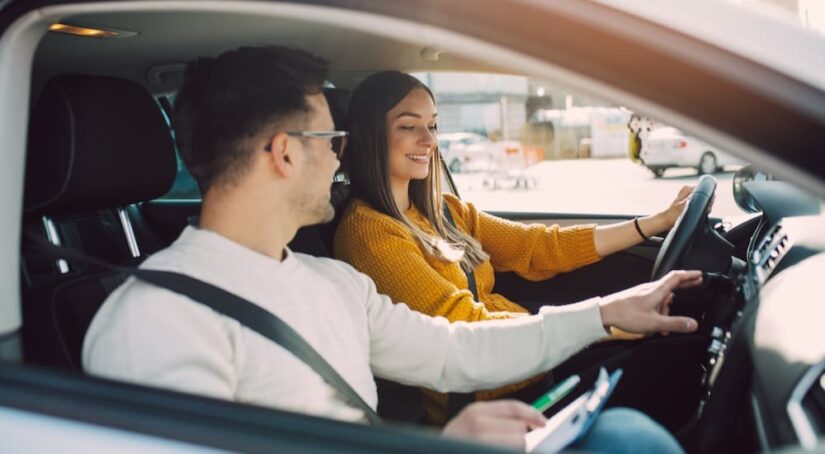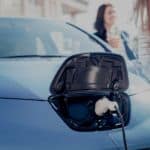What does the future hold? It’s a question we all ask ourselves, one you’ll find you’re never too old to ask. However, there’s one thing you can count on—getting your driver’s license is the first step between yourself and adulthood. Once you’re street-legal and ready to go, your life will never be the same again. Driving is fun, but it’s also dangerous if you don’t know what you’re doing. There’s a chance you’re reading and might already know how to drive a vehicle through plenty of practice, but you don’t have that piece of paper that says you’re allowed to be on the road without parental guidance.
If you were guaranteed to pass your license test, there’d be no need for practice, but how do you practice effectively enough to better your chances? That’s what I’m here to tell you about today— I’ll explain what you should do before you take your license test. Whether you’ve already scheduled your license test or not, these tips will help you get off on the right foot. Let’s begin!
Something to Consider
There’s a chance you’ve already done this, but for those who haven’t considered it—apply for a driving school before you take your road test. Taking a driving school course sounds tedious because it is. When I went to driving school, I had to sacrifice a week of my summer to sit for eight hours a day in one classroom for a week, but don’t fret because there are also driving schools that stretch these 40 hours of courses over a month—I took the quicker route is all. Sitting in a classroom, as dull as it may sound, is where you’ll learn the intricacies of the road in an environment where you can ask a teacher questions you have and form a solid set of notes.
On a side note, you may also meet a new friend at a driving school. And, if it helps, see if you have a friend who is also in the process of acquiring their license and is looking for someone to take a Driver’s Ed course with. The reason why I recommend Driver’s Ed isn’t so much for classroom learning as much as it’s the real hands-on driving experience with a certified instructor sitting next to you and guiding you on main roads, backroads, the freeway, etc. If you’re under 18, these hours with an instructor and hours spent with your parents are necessary. I can’t stress this enough: driving hours are the most important thing you can do before a driving test. As the old saying goes: “Practice makes perfect.”
Making Use of Modern Tools
Taking a road test in the modern age is fundamentally similar to what it was back when your parents took the road test, but that doesn’t mean everything else around it hasn’t changed. My honest opinion? You should learn the fundamentals like many of us learn millions of other topics: with an internet connection and a little doo-dad called YouTube. No, seriously, YouTube is an excellent resource for learning almost anything.
Live in an area with state laws that you need to consider? There’s bound to be an individual with a camera and a winning personality (that last one isn’t a guarantee, unfortunately) in your area who has already made a video for you to troubleshoot that one portion of your driving test if it’s been causing you issues. For example, you might need to learn parallel parking for your test—I know I had to. While you won’t fully get the same effect as you would if practicing it behind the wheel, you can take the advice you get from these videos and attempt to replicate it when you’re out practicing. I found this to be a helpful tip when I was learning.
Remember These Steps
Practicing for your road test means you aren’t driving down to the store, but you’re completing a checklist of the instructor’s requisites. You may have heard that you can instantly fail your driving test if you don’t immediately put on your seatbelt before doing anything else. You may have also heard the same goes for your hand signals. These claims are accurate, so make sure you constantly remind yourself about the seatbelt before you sit in the car because sometimes nerves can get the best of you. It can quickly go over your head while you desperately try not to fail the test.
Hand signals and seatbelts; anything else? Oh, yes, something you should never do during your license test is to look at the camera feed on the infotainment center if the vehicle has a backup camera. The DMV employee conducting the test wants to see that you know how to drive without a rearview camera because not every vehicle has one, which was almost always the case for most vehicles before the 2010s. This can be a tricky one to remember if your parents taught you to drive, as they may have encouraged using the rearview camera because they do. Just remember that driving school teachers won’t let that fly.
Things to Practice
As I mentioned, the road test covers more than driving down the road. There’s the aforementioned parallel parking you must conquer if your state requires it, but there are also things you should know, like the three-point turn. The three-point turn is something that watching videos of on YouTube beforehand assisted me greatly in understanding the concept and learning how to follow each step carefully. The three-point turn is a multi-step process, and the driving instructor will be watching you perform every one of the steps, so study up on it. And, while reversing in a straight line against a curb may seem trivial—it honestly isn’t the most challenging portion of the test if you remain vigilant and reverse cautiously—you should still practice it every time you’re out driving before the test. With this in mind, create a familiar route around your neighborhood where you can safely practice these things. Even better, practice things like the three-point turns, reversing against a curb, and even parallel parking in an empty parking lot if you can.
Practicing how to drive on the main road is critical for success. Still, empty parking lots give you the freedom for error without interfering with other people—pedestrians, drivers, etc. As I mentioned, you can practice the various portions of your driving test in an empty parking lot, but to learn parallel parking, you’ll need a visual aid. This is where parking cones come into play. Fortunately for me, my driving school had a car set up outside in the parking lot. As long as you were a paying student, you could visit that car and practice parallel parking the vehicle you’re in with it. Not everyone has that luxury, of course, so parking cones are a great alternative.
Make sure you buy the cones that are the height of your vehicle’s side mirrors. Take five cones and place two adjacent to each other. About fifteen yards away from these cones, put another two cones so that all four are lined up in a rectangle. Take the fifth cone and place it on the side where your right-side passenger door will be facing when you reverse into the spot. This not only serves as a visual aid, but in a worst-case scenario, if you strike one of the cones, it won’t damage the vehicle. It’s likely not your car that you’re practicing with anyway, so this also benefits the person who’s kind enough to lend you their car. And, as great as practicing in a parking lot sounds, you should practice on the main roads, too, which is something a driving school instructor will have you do anyway.
Pick A Day, Stay Confident!
My main piece of advice is this: stay confident! The instructor who takes you on the test is also a person and is just doing their job, so even if it doesn’t work out and you need to schedule a second, third, or even fourth road test, it’s not the end of the world, and remain courteous. That said, don’t go into the road test expecting to fail because that’s not the right attitude, not during the road test or at any point in life.
Go in with confidence and a smile, do what you’ve learned, and you’ll do great. Once you’ve passed the test, a feeling of excitement and accomplishment will wash over you, and it’s both a feeling and a memory you’ll cherish for the rest of your life. Good luck out there—your friends at AutoInfluence and I believe you’ll do great, and we look forward to seeing you on the open road!



